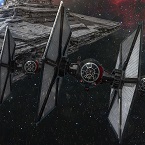Aeson
Posts: 784
Joined: 8/30/2013
Status: offline

|
quote:
ORIGINAL: Retreat1970
quote:
IS there any point in making 250 sized ships instead of making a fleet of largest sized ships ?
Nope, just cost.
Assuming equal construction tech, smaller ships will be completed more rapidly than larger ships, so that can be a factor, too.
Regardless, when asking whether there's a point to making a size-X ship instead of a size-Y ship, you really need to think about what you want to do with the ships and how much of a difference it makes whether the ship is size-X or size-Y. If you're looking for a front line battleship and X = 250 while Y = 500, there's very little reason to make size-X battleships instead of size-Y battleships. If X is 400 when Y is 500, or X is 250 when Y is 276, then there's probably a justifiable reason to build the slightly smaller battleship instead of the more powerful battleship.
An example of a situation where you might build a smaller ship rather than a larger ship can be found with the Ackdarians. At construction size 300, they can build standard military ships to size 360. If their support component technology gives their support components a support size of 85, it takes 5 life support and 5 habitation modules to build a size-360 ship, but 4 of each will allow them to build a size-352 ship.
Another example can be found with carriers due to the required 40% or more size invested into fighter bays. Let us assume that the maximum size carrier we can build is size-600 (standard construction size limit of 400) and that we are using advanced fighter bays. A size-600 carrier requires 240 size to be spent on fighter bays in order to be a valid design. In order to meet this requirement, the design must include 6 advanced fighter bays, which consume 270 size. If we are willing to reduce the size of the carrier a little, we can instead use 5 advanced fighter bays, allowing us to build a carrier with a maximum size of 562. A size-600 carrier with 6 advanced fighter bays has 330 capacity available for components other than fighter bays whereas a size-562 carrier with 5 advanced fighter bays has 337 capacity available for components other than fighter bays. (Incidentally, another possible solution for a carrier of nominal size 600 is 2 advanced and 3 standard fighter bays, which exactly meets the minimum required size spent on fighter bays for a size-600 carrier and is an example of a time when you might consider using lower-tech components despite having upgraded versions available since this produces a size-600 carrier with 360 size available for components other than fighter bays.)
|
 Printable Version
Printable Version







 New Messages
New Messages No New Messages
No New Messages Hot Topic w/ New Messages
Hot Topic w/ New Messages Hot Topic w/o New Messages
Hot Topic w/o New Messages Locked w/ New Messages
Locked w/ New Messages Locked w/o New Messages
Locked w/o New Messages Post New Thread
Post New Thread